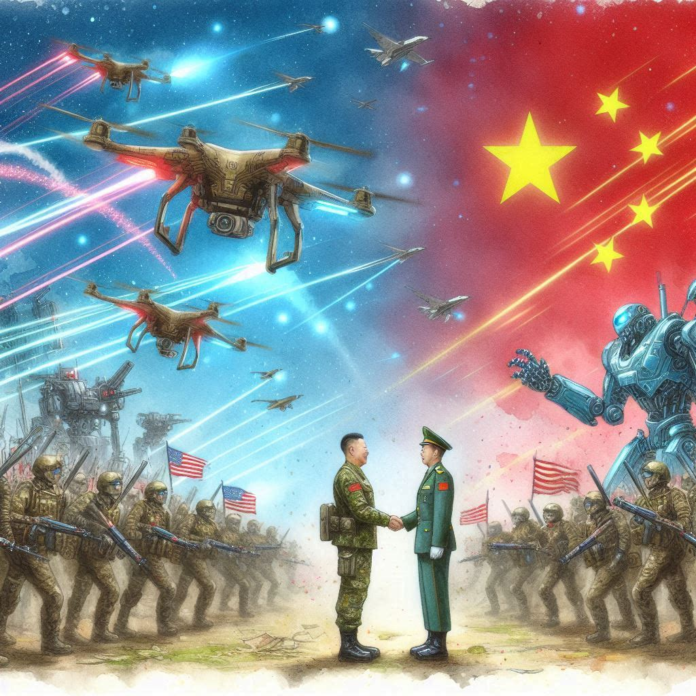American researcher Ryan Hass, director of the John L. Thornton China Center at the Brookings Institution, has recently highlighted the precarious situation in this region and the potential for US-China War. The ongoing geopolitical standoff between the United States and China over the Spratly Islands in the South China Sea is a subject of intense scrutiny and debate.
The Strategic Importance of the Spratly Islands
The Spratly Islands, a disputed archipelago in the South China Sea, have long been a flashpoint in international relations due to overlapping territorial claims by multiple countries, including China, the Philippines, Vietnam, and Malaysia. Among these disputes, the Second Thomas Shoal stands out as a significant symbol of national pride and strategic importance for the Philippines.
A key element in this geopolitical puzzle is the Sierra Madre, an aging Philippine naval vessel deliberately grounded at the Shoal in 1999 to assert Manila’s claim over the area. This strategic outpost serves as a physical marker of Philippine sovereignty in the face of China’s expansive territorial ambitions.
In his Foreign Affairs article, Hass underscores that any attack on this outpost or its personnel could trigger severe repercussions, potentially drawing the US-China war.
Read His Article in the Foreign Affairs
The U.S. Commitment to the Philippines
In recent months, U.S. officials have been vocal in reaffirming America’s commitment to its Mutual Defense Treaty with the Philippines. This treaty, established in 1951, obligates the U.S. to come to the aid of the Philippines in the event of an armed attack. Ryan Hass highlights that U.S. Secretary of State Antony Blinken and Defense Secretary Lloyd Austin have made it clear that any attack on Philippine forces, including those stationed on the Sierra Madre, would invoke American defense commitments.
Monster Chinese Ship Drops Anchor Near Escoda Shoal in the Philippines: A Looming Maritime Threat
President Ferdinand Marcos Jr. of the Philippines also amplified this stance during the Shangri-La Dialogue in Singapore in May. Marcos Jr. warned that any harm to a Filipino in the region would be considered an act of war against the Philippines, thereby engaging the U.S. in defense of its ally. This rhetoric serves as a deterrent to China but also complicates the delicate balance of international diplomacy in the region.
Recent Escalations and Their Implications
One of the most alarming incidents occurred on June 17, when Chinese coast guard vessels collided with a Philippine supply boat at the Second Thomas Shoal. The confrontation saw Chinese forces using physical force, including axes and machetes, which resulted in injuries to a Filipino sailor. Despite this, both Chinese and Philippine vessels continue to maneuver close to each other, underscoring the fragile peace that exists in the region.
Philippines May Acquire First Attack Submarine; Amid Rising Tensions with China
Ryan Hass argues that such incidents, while seemingly minor, hold the potential to escalate into full-scale conflict. He points out that the death of a Filipino soldier or sailor could trigger the Mutual Defense Treaty, thereby pulling the U.S. into a direct confrontation with China. This risk underscores the urgent need for both sides to manage tensions carefully and avoid actions that might be perceived as provocations.
The Need for a Diplomatic Solution
In his article, Hass advocates for a strategic approach that avoids turning the South China Sea dispute into a larger U.S.-China conflict. He argues that the Second Thomas Shoal presents a military challenge but not necessarily a military problem that requires a military solution. Instead, he calls for a diplomatic strategy that balances the U.S.’s defense commitments with efforts to avoid direct confrontation with China.
Squad Shield: US Prefers Philippines over India Amid Rising South China Sea Tensions
Hass emphasizes that the U.S. should maintain a clear and consistent policy towards its alliance with the Philippines while also working to prevent China from establishing greater control over the Spratly Islands. He suggests that Washington should focus on managing the crisis through diplomatic means rather than allowing it to become a battleground for geopolitical competition.
Strategic Dimensions of the US-China War
The Spratly Islands conflict is as much about symbolism as it is about strategy. For the U.S., China, and the Philippines, the region represents a test of national resolve and international credibility. For the Philippines, the Sierra Madre at the Second Thomas Shoal is a symbol of its determination to uphold international law and resist Chinese encroachment.
In the Shadow of Tensions: Philippines-USA Talks in the South China Sea
Hass notes that the U.S.’s credibility as a security partner is at stake. A failure to support the Philippines in this dispute could undermine U.S. commitments to other allies in the region and affect America’s standing as a global power. Conversely, China views the Spratly Islands as a critical component of its maritime strategy and its broader aspirations for regional dominance.
Moving Forward: Balancing Act and Strategic Patience
Ryan Hass’s analysis provides a framework for understanding the current tensions and potential pathways forward. He advises against viewing the South China Sea dispute as a zero-sum game and warns against allowing “security hawks” to drive U.S. policy towards a confrontation with China. Instead, Hass calls for a balanced approach that emphasizes diplomacy, strategic patience, and careful management of international relations.
In conclusion, the situation in the South China Sea remains fluid and fraught with potential for conflict. The delicate balance between upholding the U.S.-Philippines Mutual Defense Treaty and avoiding direct confrontation with China is a challenging diplomatic endeavor. As Ryan Hass argues, the future of the Spratly Islands will depend on the ability of the United States and its allies to navigate these turbulent waters with a mix of resolve and restraint.


